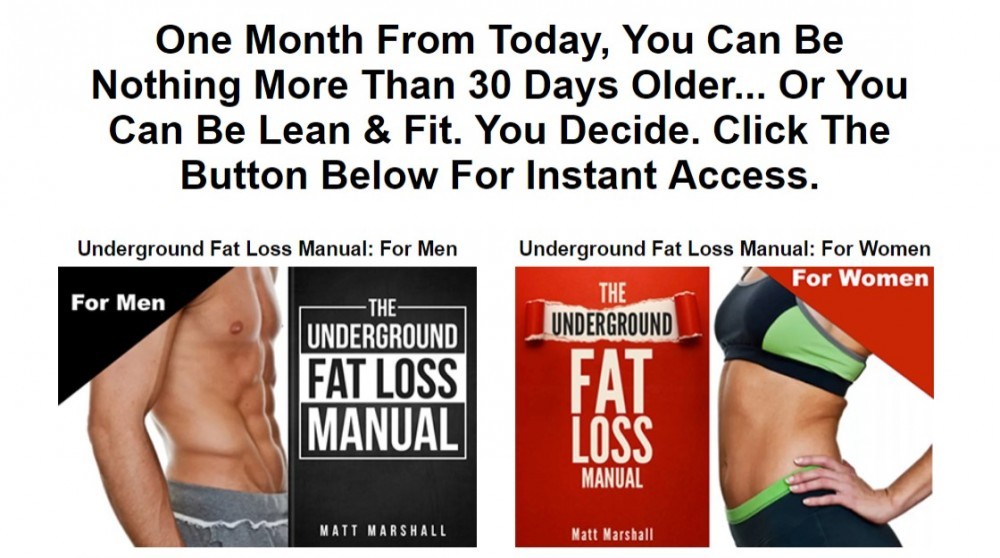I started training about nine years ago. In this period I learned a lot, but also made a lot of mistakes. That is why I have now, almost a decade later, made a list of the 15 things that I should have known then. Use it to your advantage!
1. Teach the compound exercises well
Compound exercises are always the basis of good training. Both if you train for more muscle mass or muscle strength. With compounds you use more muscle mass, you build more strength and learn to move better than with isolation exercises . So get off the machines, and make sure you have the following exercises (and variations thereof!) Well controlled: Squat , dead lift , lunge , overhead press , bench press , dip , push-up , pull-up and barbell row .
2. Calories
It does not matter what diet you follow if you want to lose weight . You will not burn fat if you consume more calories than you need. Also, you will not arrive if you burn more calories than you ingest. A diet can only make it easier for you to get more or fewer calories.
For example, chocolate is more than 500 kilocalories per 100 grams. In contrast, spinach contains 25 kilocalories per 100 grams. With a chocolate diet you can get a lot easier than with a diet of spinach. Of course, the opposite applies to weight loss.
3. Proteins
To recover from your training to the maximum, it is important that you eat enough protein . After all, these are the building blocks of your muscles! A good guideline is to get about 40 grams of protein every meal, three to five times a day. Do you want more precise tuning? Then focus on 1.8-2.0 grams of protein per kilo of body weight. Divide this over 3-5 meals.
4. Sleep
Sleep is by far the best tip I can give you. By sleeping enough you build up much more muscle mass and recover much better from your workouts. Get around 8 hours a night. Is this not possible and do you sleep 5 hours a night? Bad news! There is no pre-workout, creatine or protein powder that can compensate for that.
5. Track volume
In other words: count the number of heavy sets you do per muscle group. It is not uncommon for people to spend more than 30 sets per week on their breasts, 20 sets on their backs and only 5 sets on their calves and hamstrings. And then they complain that their calves are not growing …
By counting your sets you have a way to make the training volume transparent. A good start is 12 sets per muscle group per week and from there quietly build. You will notice that some muscle groups can handle more sets than other muscle groups. You can then include this in your next schedule.
6. Progressive overload
To build muscle mass and strength you have to load your body a little heavier than what it is used to. The body responds to this by building up more muscle mass and using it more efficiently. So keep constantly adjusting the load to avoid habituation.
7. Training frequency
The training frequency is the number of times you train a muscle group per week. In the meantime it is known that a training frequency of 2-3 times a week is more effective than a training frequency of once a week.
The bro-split where you train every muscle group only once a week is really not an efficient method. So make sure that you train every muscle group 2-3 times a week to get maximum results. Upper body/lower body splits or even full-body training are therefore a great option.
8. You do not really become ‘slow’ of heavy weights
Your maximum “power output” is about 1/3 e of your maximum strength. To become more explosive therefore helps a lot to become stronger! Are you weighing 75 kg and do you want to jump as explosively as possible? Then it will help you enormously to bring your squat to the 150kg!
9. Good dead lifts are good for your back
I notice that many people are still afraid to dead-lift because they have trouble with the technique. But do not let this stop you. Get started and switch on the advice of a good trainer. A good implementation of the dead lift has many advantages, because it teaches you to stabilize your back while you are hinging in your hips. This is an essential basic movement that many people do not manage well, and is therefore extremely valuable to learn.
10. Being strong and muscular takes time
No matter how well you train, sleep and eat: muscle strength and muscle mass do not develop very quickly. After a year you will not look like someone who has been training for 10 years. There are no shortcuts, 6 week programs or 90 day transformations. Your perfect summer-body costs 3 years. Before you really are strong, you are 5 years further. In this article ” A six pack in 6 weeks ” my colleague explains why it takes time to achieve good results.
11. The importance of a full range of motion
By training me a full range of motion you can build more muscle mass, muscle strength and flexibility than with a limited range of motion. So squat deeply, touch your chest with bench press (gently) and stretch your arms with your pull-ups! Half repetitions give you half a result.
12. You can not do everything at once
Maybe you recognize this: you want to be super shredded, 220kg squats, bigger arms and really have done a triathlon once in your life. This is of course a super nice goal, but also a very big pitfall. You can not get everything at once.
Training for a triathlon will help you to lose some fat, but it really does not help you to grow big arms. Focus on things that go together and leave the other things for a while. You can pick it up later.
13. Supplements are (largely) nonsense
Sleep, training and nutrition are the three pillars of your progression. Supplements will not really make you stronger or more muscular and they will not really help you lose weight if your sleep, training and diet are not in order.
14. There are no magical diets
Paleo, Keto, low-carb, Intermittend fasting , vegetarian or vegan; for every diet there are success stories that assign it almost magical properties. One diet increases your testosterone levels, the other diet is presented as the solution for cancer. Sometimes these arguments are substantiated with a reasonable logical explanation, or they have selected a number of studies that fit the position ( cherry picking ). The studies that do not support it are often omitted for the sake of convenience.
15. You are not a pro-bodybuilder. So do not train too!
The internet is full of workouts of pro-bodybuilders in which they spend a whole training on one muscle group and tackle it with dozens of sets. Do you have to train like that? No! As a chemical mass sample of 125 kg your training looks very different than for a natural athlete







